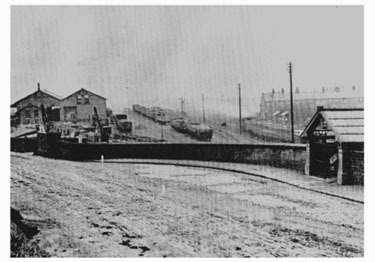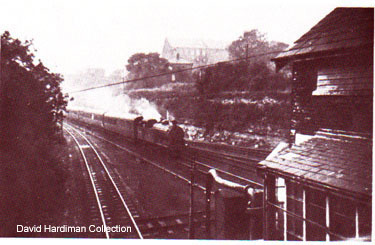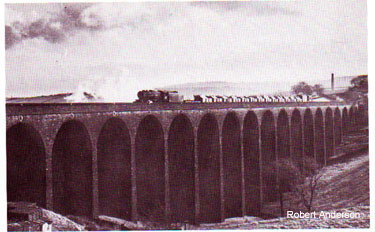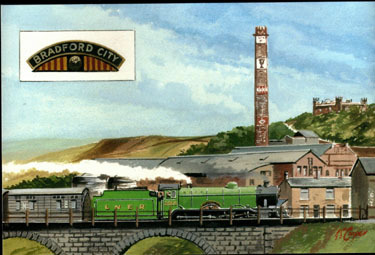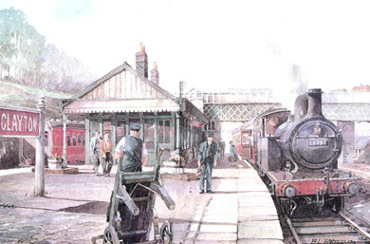|
CLAYTON STATION c1950
During the late 1860's a group of businessmen, notably Fosters of Queensbury, privately sponsored a scheme for a railway line between Bradford and Thornton via Clayton and Queensbury. Henry Nelson a Leeds solicitor drafted a bill for submission to Parliament during the 1870 session. The bill was passed and sanctioned as the" Bradford and Thornton Railway Act". Interest was shown by The Great Northern and the Midland Railway Companies. Realising the possibility of linking the new scheme with the Halifax / Ovenden line via a tunnel under Queensbury, the Great Northern took up the contract in 1871. The contractors for the line were Messrs Benson and Woodiwiss who had been involved in building the Settle Carlisle line. Work started in 1874. The line from Bradford Exchange travelled via St Dunstans, Manchester Road, (prematurely closed in 1926), Horton Park, Gt Horton, Clayton, Queensbury to Thornton. The line to Keighley had been abandoned at this point in time, due to engineering difficulties. Great Horton had an impressive goods yard and parcel depot, requiring several trains a day. From Great Horton the line passed through a cutting and on to an impressive embankment near Pasture Lane, 950 yds long and 62 ft at its greatest depth, and so on to Clayton Station. The small central platformed station, opened for goods on the 9th July 1877 and for passengers on the 14th October 1878. It had a goods yard, used for sorting Bradford, Halifax and Keighley freight. The line then passed under Station Rd and entered the Clayton tunnel en-route to Queensbury. (see Queensbury Station) The line continued to Thornton via the massive High Birks embankment. Subsidence was a big problem in constructing this 900ft long, 104ft high embankment, which contained 250,000 cubic yards of tipped material. The final part of the line was the Thornton Viaduct, crossing the Pinch Beck valley. Twenty arches, 300 yds long and 120 ft from the valley floor The piers were sunk 25ft underground and the span of each arch was 40ft. The first passenger train from Bradford to Thornton ran on the 14th October 1878. The last passenger train was on 23rd May 1955.
For more information on the Bradford-Halifax-Keighley railways visit the web site lost railways.
|
